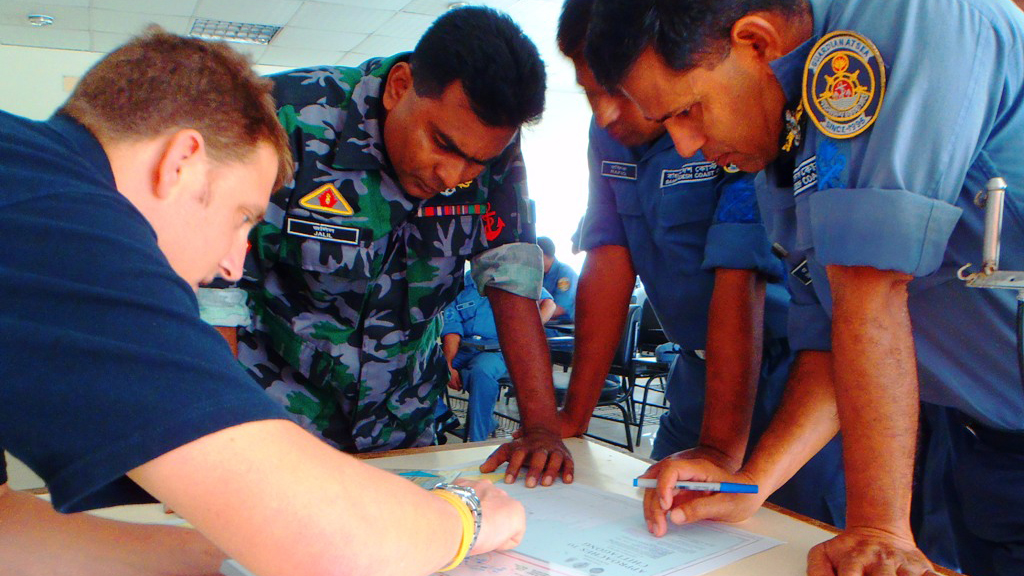Reduce exposure to water hazards through barriers
Method
Reducing exposure to water hazards through the strategic use of barriers involves placing physical barriers around a water hazard, or on a route towards a water hazard, making it inaccessible. It is an especially useful tool for infants and young children who, while curious about water, may not fully understand its dangers.
Barriers can come in many different forms and should be selected to suit the context they are being used in. In high income countries, where many child drowning cases occur in private swimming pools, an effective intervention may be installing four-sided fencing (completely separating the pool from the house and backyard) around a swimming pool, with a self-closing and self-latching gate. In low-income countries, where numerous waterbodies are present throughout community settings, it may be more efficient to put barriers on doorways of households, or to use playpens, to prevent children from accessing near-by ponds or rivers. In rural community settings very young children are often placed in baskets, effectively preventing them for crawling towards waterbodies.
In order to ensure barrier use is effective, it is important to identify which waterbodies are hazardous, how they are accessed, who they are accessed by, what purpose they are accessed for (recreation or activities of daily living) and whether they are more hazardous under certain circumstances (for example, following heavy rain, during a large sea swell, at high or low tide). A hazardous waterbody may be one that people are in frequent contact with, such as a river or lake used for fishing, washing or transport. Deep or muddy water bodies can also be dangerous as it can be hard to estimate the depth, see submerged objects or locate an individual who has fallen in if rescue is required.
Advantages
- Once built, many of these barriers can operate without constant human supervision.
- Some barriers can be removed and re-installed in response to high risk circumstances.
- Can be a simple intervention to plan and implement.
- Can be cost-effective, depending on the type and the number of barriers required.
- Barriers can be created out of many types of readily available, locally sourced materials such as plastic, timber or bamboo.
Disadvantages
- Barriers may require regular maintenance, especially in high traffic areas.
- Barriers may not be effective as a stand-alone intervention, particularly if barriers can be crossed over or knocked down. A combination of strategies may be required to ensure access to a hazardous waterbody is not possible.
- May require some technical skill to build barriers that are stable and safe.
- If there is a very large body of water, such as a coastline, it may not be cost-effective or practical to use barriers.
Context
Barriers are a useful drowning prevention tool, especially for infants and young children who may not fully understand the dangers of water. They are particularly effective in low-resource settings, where a range of low cost, local materials can be used for their construction. It may be simpler and more cost-effective to fence off exits from homes and public places instead of fencing off very large bodies of water, so be sure to investigate the area thoroughly before planning barrier installation. In all circumstances, barriers should be used in conjunction with adequate supervision around water.
Examples
Example of a drowning reduction intervention including the promotion of barrier use (Philippines)
Use of barriers as a tool to improve child supervision (Bangladesh): Callaghan, J. A., et al. "Child supervision practices for drowning prevention in rural Bangladesh: a pilot study of supervision tools." Journal of Epidemiology & Community Health 64.7 (2010): 645-647.
Effectiveness of pool fencing for preventing drowning in children: Thompson DC, Rivara F. Pool fencing for preventing drowning in children. Cochrane Database of Systematic Reviews 1998, Issue 1. Art. No.: CD001047. DOI: 10.1002/14651858.CD001047
More information
Home pool safety checklist (PDF 263KB)
Home pool safety fact sheet (PDF 169KB)
Child safe play areas fact sheet (PDF 309KB)
Step 5
Set objectives and interventions
